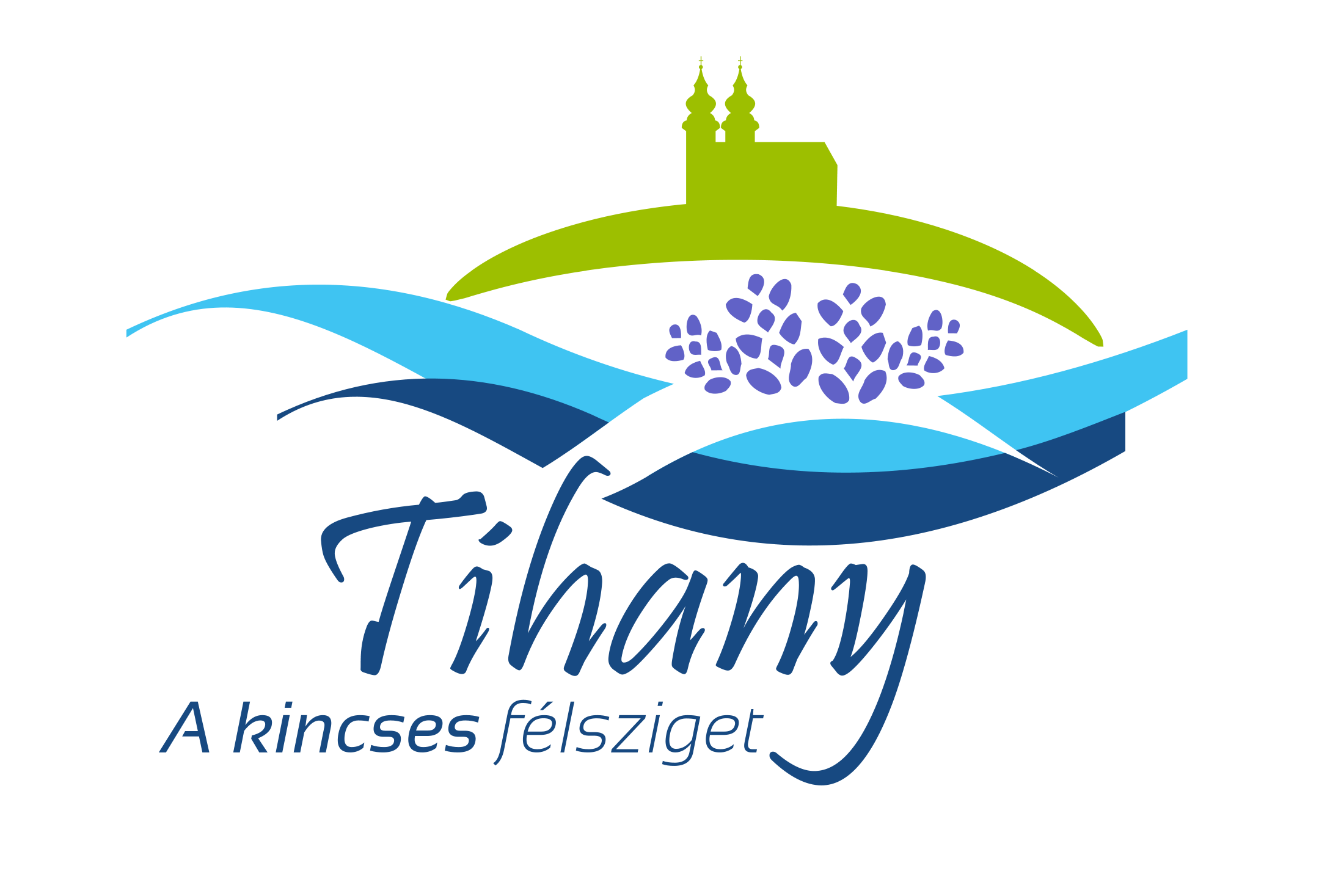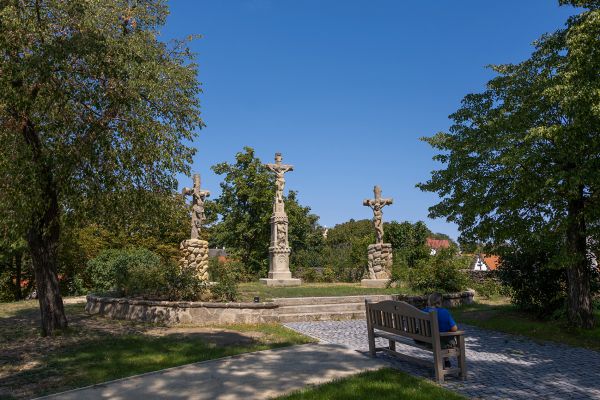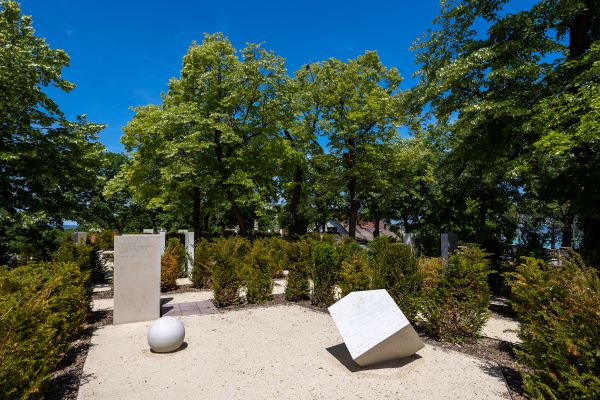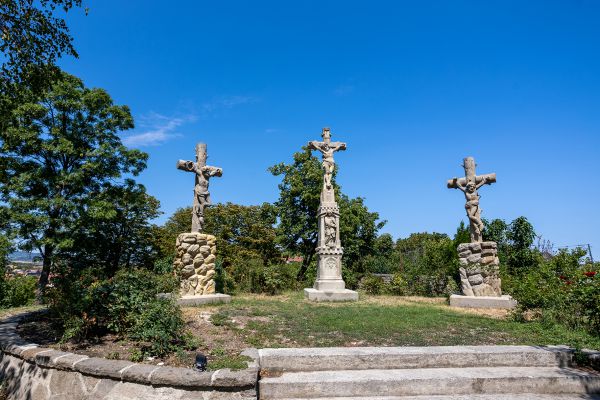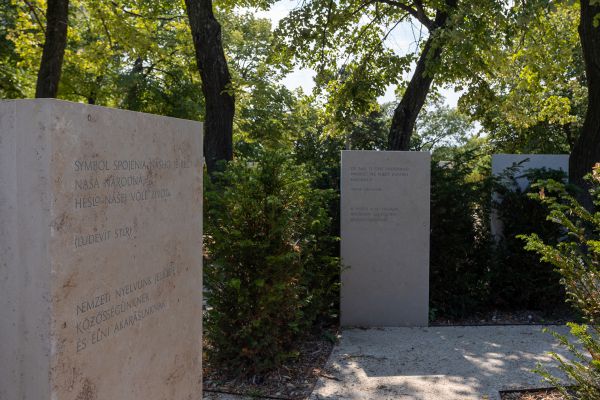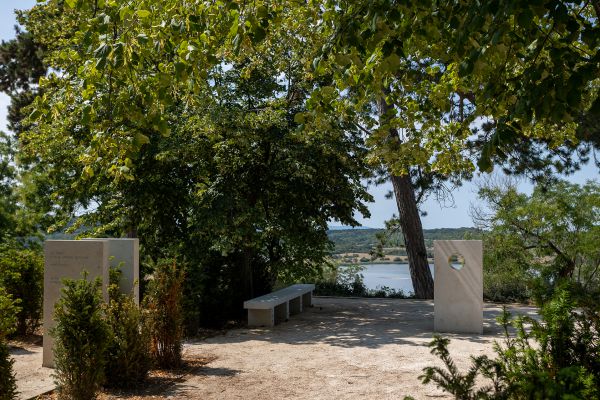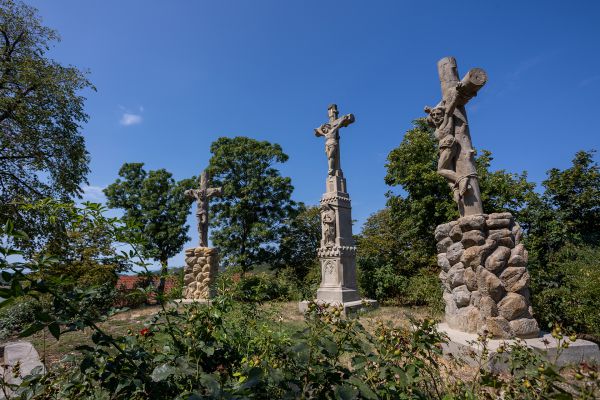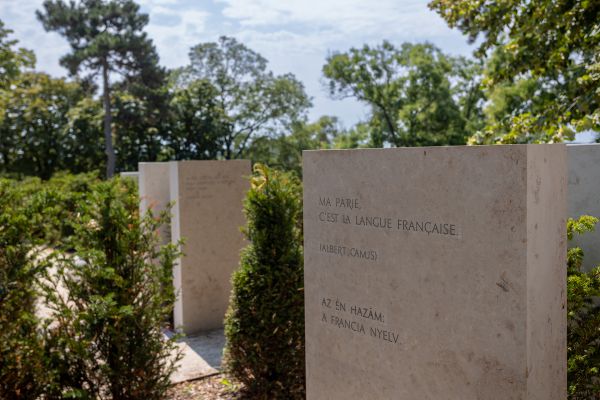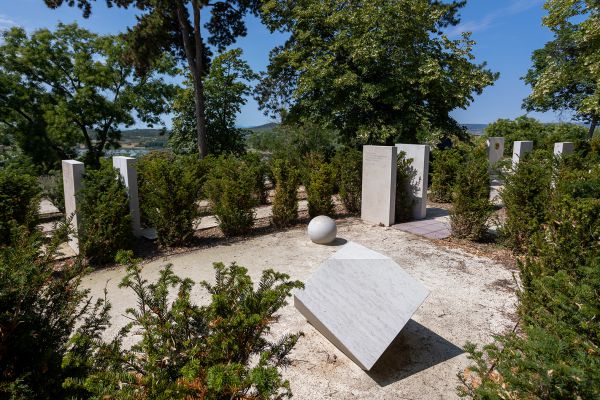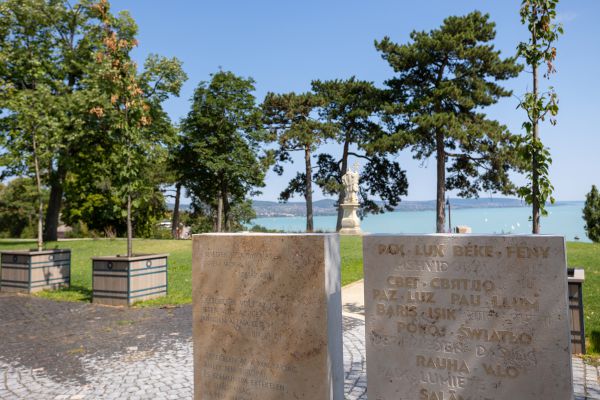The Pentecost Park, organically connected to the Tihany Benedictine Abbey, is one of the largest contiguous public parks in Tihany, which, due to its topography, could be approached and opened to the public as a public park by building stairs and retaining walls.
The park is also meant to serve the relaxation of the visitors. In 2021/2022, the Pentecost park underwent a major development, the aim of which is to expand the functions of the park, in order to provide residents and visitors with a rich program: through parts of the promenade, event space and recreation garden.
The park can be accessed from the abbey, from Batthyány Street and from the Pisky Prome-nade. There is also an access point at the intersection of Visszhang Street and Batthyány Street. This walkway has been emphasized more and included in the exploration of the park. In the axis of the park, a wide promenade has been placed, which, interrupted by two smaller squares, leads from the square next to the Abbey to the Kiskálvária (Small Calvary), which has also been renewed in the heart of the Pentecost-grove.
Due to the steepness of the terrain, access to the boardwalk is possible for the disabled on the longer, gently curved path with a 5% gradient. A faster ascent is provided by the shorter stairway coming from the Pisky promenade, which connects to the promenade at the inter-mediate rest area. The more representative design of the road is enhanced by the perennial plantings running alongside it, the stone pavement different from the internal roads and the wider walking surface, as it is gradually used during church holidays.
An important goal was the so-called creation of a "language memorial trail and walking path" that presents the founding document of the Abbey of Tihany. The founding document of the Abbey of Tihany is the earliest surviving linguistic relic of the Hungarian language in its original form. The Hungarian expressions being of a priceless value open a window to the Hungarian language almost a thousand years ago. The founding document of the Tihany Ab-bey in 1055 is a notable written memory not only because it is chronologically the first of the Latin documents that preserve Hungarian words, but also as a source of cultural history. King András I gifted large estates to the monks of Tihany. He placed many families of serv-ants under their authority. The abbey's lands were cultivated by the population of sixty hous-es, and its grapes were harvested by twenty winegrowers. The stud, foal, sheep and pigs were looked after by five colts, three foals, three shepherds and two goatherds; in addition, twenty horsemen, ten fishermen, two beekeepers, two cooks, two shoemakers, two carpenters, two coopers, two millers, a goldsmith, a tanner, a carver, a washerman and ten maids were in the service of the monastery.
The statue of King András I and his wife Anastasia stands in the Balaton side of the park, opposite the Abbey. The statue of King András and his wife, the Ukrainian Grand Duchess Anastasia, was unveiled on November 17, 2001 in Tihany, on the hill at the shore of Lake Balaton.
On the sculptural composition carved from white marble, the following inscription can be read in Hungarian and Ukrainian: András the King of Hungary and Anastasia the Queen of Hungary (Grand Duchess of Kiev). The statue is a splendid display of the good-neighborly and historical relations between the Ukrainian and Hungarian nations.
The creators of the statue: sculptor Bohdan Korzs and architect Turik Oleg.
 English
English  Čeština
Čeština  Nederlands
Nederlands  Polski
Polski  Magyar
Magyar  Deutsch
Deutsch 